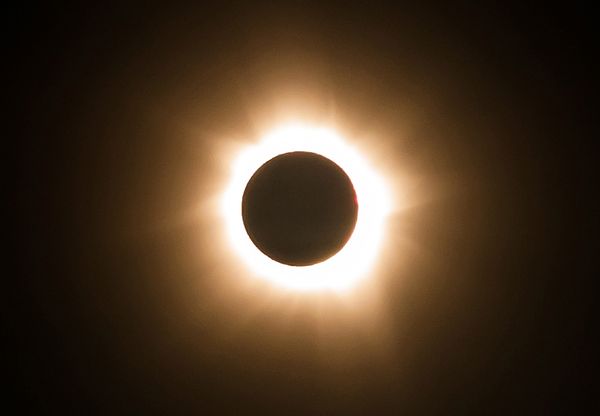Shamakhi observatory says two solar eclipses expected in 2014

By Sabina Idayatova
Two solar and two lunar eclipses will occur in 2014.
The first lunar eclipse will occur on April 15 next year, the
deputy director on scientific research of Shamakhi Astrophysical
Observatory of the Azerbaijan National Academy of Sciences (ANAS),
Khidir Mikayilov, reported on November 18.
The lunar eclipse will last 3 hours and 35 minutes from 10:58 to
14:33 Baku time and can be seen from Australia, the Pacific Ocean
and the Americas.
The second lunar eclipse will occur on October 8 at 14:15 and end at 17:34 local time.
Duration of the lunar eclipse will be 3 hours and 29 minutes.
This event will occur in Asia, Australia, the Pacific Ocean and the
Americas.
The following year, the first solar eclipse will be observed on
April 29, from 8:54 local time to 13:14. It will be a ring-shaped
solar eclipse and observed in Australia, the Indian Ocean, and
Antarctica.
The next solar eclipse will be on October 24 and last from 00:40
to 04:52. The second solar eclipse will be partial and can be seen
in North America, Russia and in the surrounding areas.
None of the solar and lunar eclipses in the next year will be
observed in the Azerbaijani territories.
Solar eclipse occurs when the Moon passes between the Sun and Earth, and fully or partially blocks the Sun. This can happen only at new moon, when the Sun and the Moon are in conjunction.
In a total eclipse, the disk of the Sun is fully obscured by the Moon. In partial and annular eclipses only part of the Sun is obscured.
An eclipse is a natural phenomenon. Nevertheless, in some ancient and modern cultures, solar eclipses have been attributed to supernatural causes or regarded as bad omens. A total solar eclipse can be frightening to people who are unaware of its astronomical explanation, as the Sun seems to disappear during the day and the sky darkens in a matter of minutes.
As looking directly at the Sun can lead to permanent eye damage or blindness, special eye protection or indirect viewing techniques are used when viewing a solar eclipse.
A lunar eclipse occurs when the Moon passes directly behind the
Earth into its shadow. This can occur only when the Sun, Earth, and
Moon are aligned exactly, or very closely so, with the Earth in the
middle. Hence, a lunar eclipse can only occur the night of a full
moon. The type and length of an eclipse depends upon the Moon's
location relative to its orbital nodes.
Unlike a solar eclipse, which can only be viewed from a certain
relatively small area of the world, a lunar eclipse may be viewed
from anywhere on the night side of the Earth.
A lunar eclipse lasts for a few hours, whereas a total solar eclipse lasts for only a few minutes at any given place, due to the smaller size of the moon's shadow. Also, unlike solar eclipses, lunar eclipses are safe to view without any eye protection or special precautions, as they are no brighter than the full moon itself.
Here we are to serve you with news right now. It does not cost much, but worth your attention.
Choose to support open, independent, quality journalism and subscribe on a monthly basis.
By subscribing to our online newspaper, you can have full digital access to all news, analysis, and much more.
You can also follow AzerNEWS on Twitter @AzerNewsAz or Facebook @AzerNewsNewspaper
Thank you!
